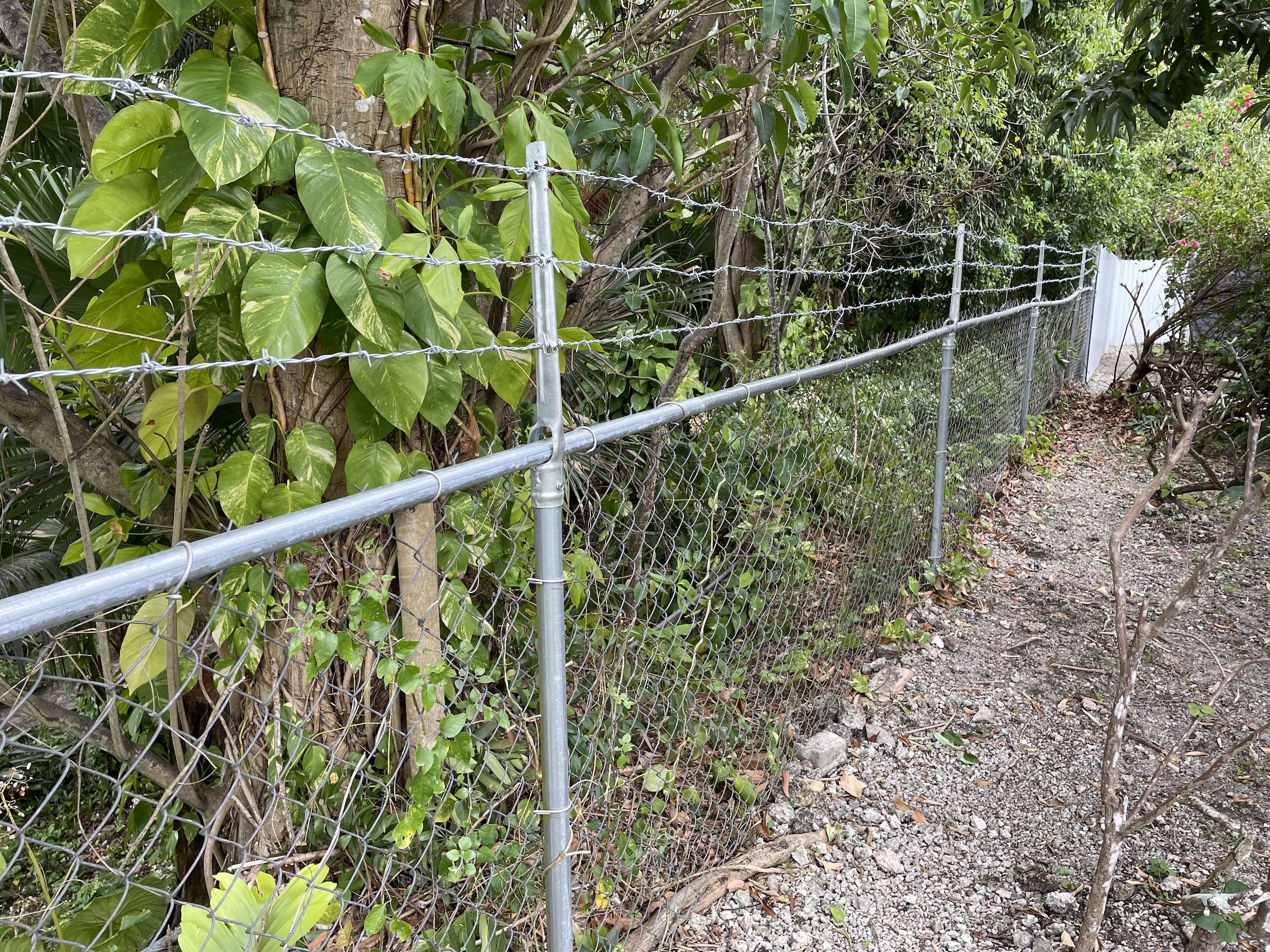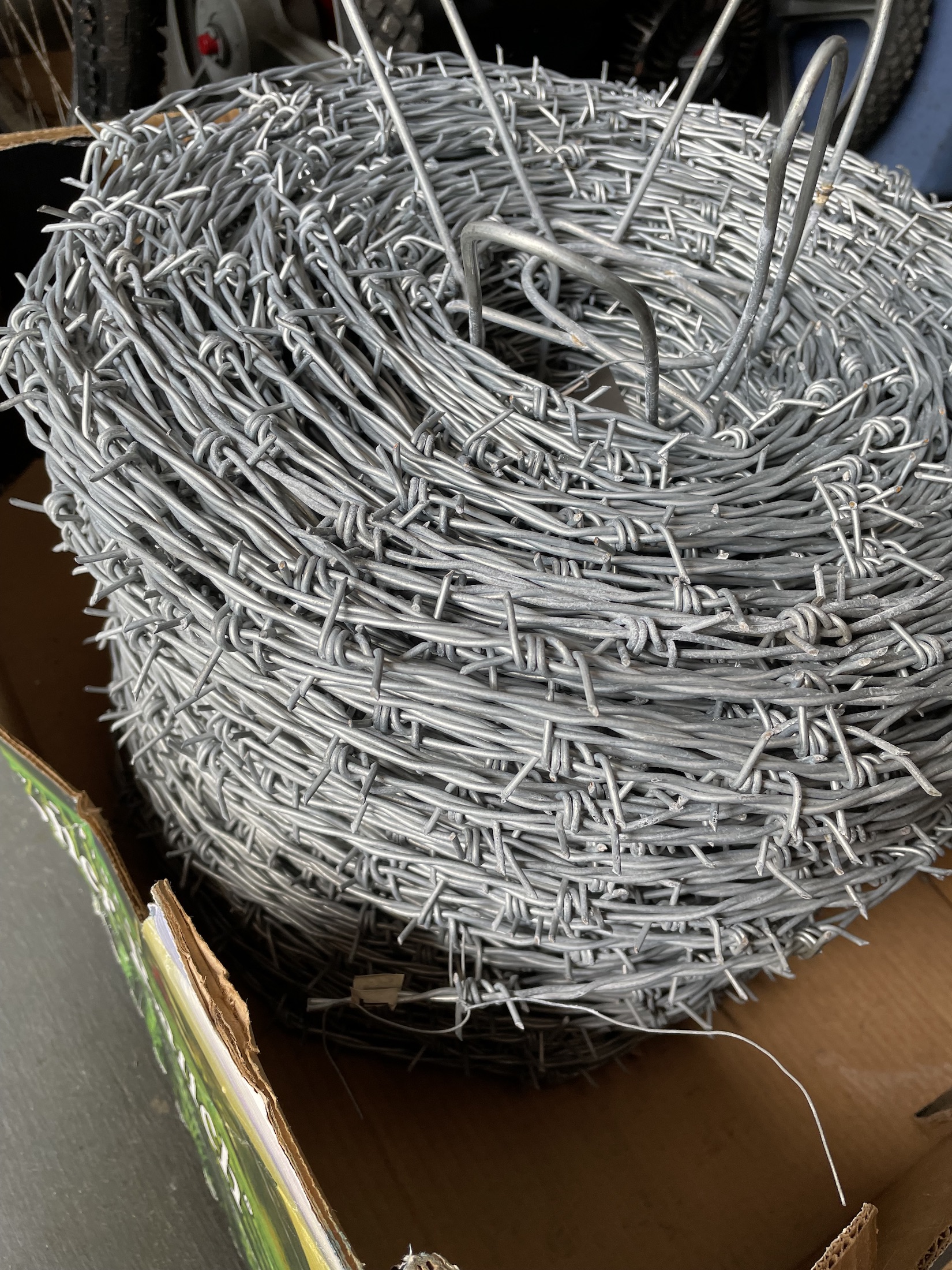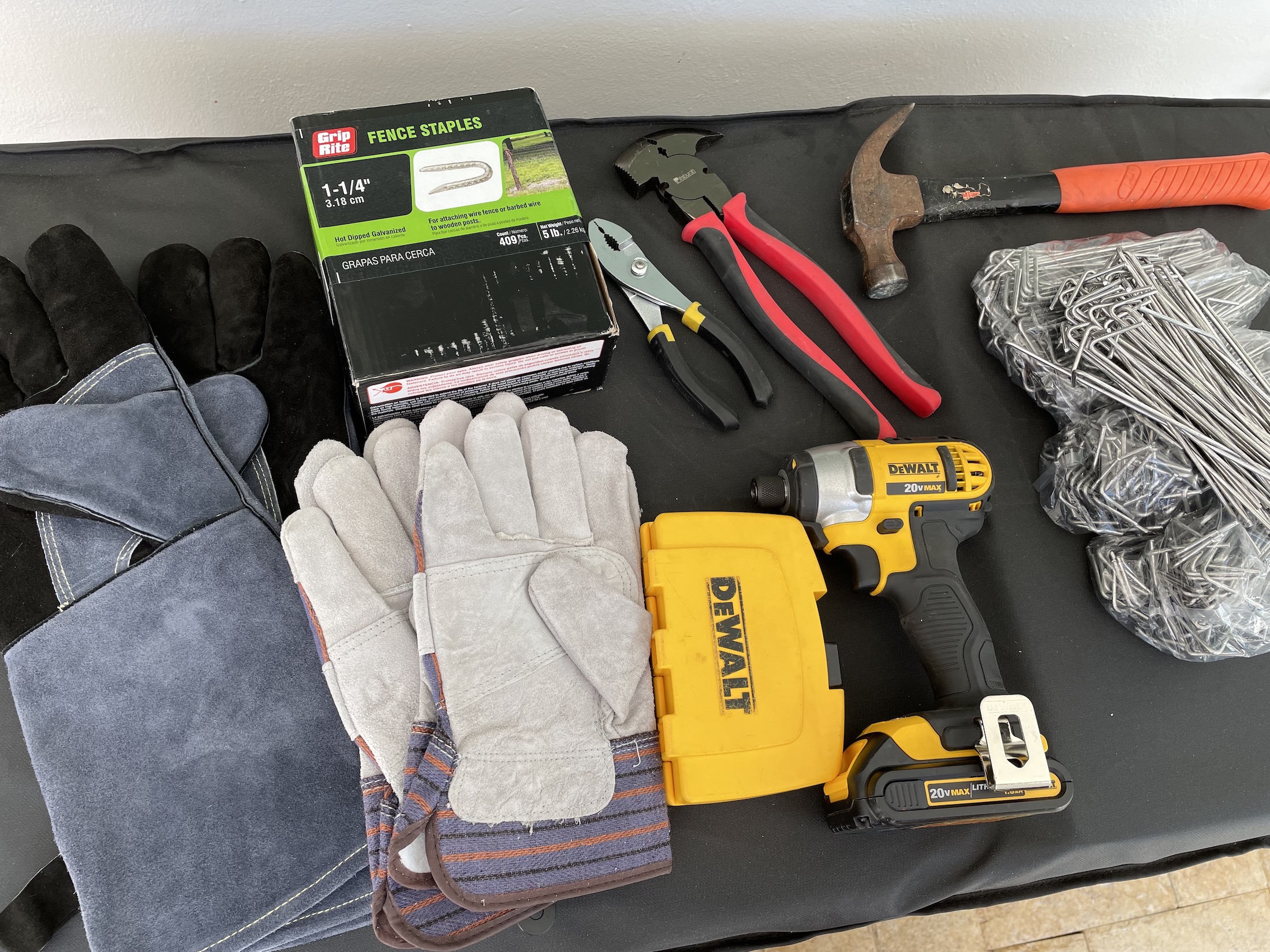
Amer Cop 1 (a)
A backyard fence can be made taller and more robust by adding barbwire arms and three lines of barbwire.
Security and self-defense are usually two of the top priorities in any survival situation. Having the proper self-defense tools, and knowing how to use them effectively, is crucial to this strategy, and so is creating a defensive perimeter around your property. While no amount of security will stop a determined threat, it will undoubtedly help slow it down, giving you time – which is your friend. Perimeter defense will include cameras, motion detectors, lights, guard dogs, and barriers. In this article, we look at strategies to secure and harden your property’s perimeter. We will discuss the tools and supplies you need to get started.
Defensive Perimeter
During the last few years, we’ve all seen a sharp increase in civil unrest. Even though the mainstream media downplays these events, the trends are apparent. While these events may start out “mostly peaceful,” they usually turned “mostly” violent, destructive, and even deadly in short order. This lawlessness has traditionally been limited to usually predictable areas. People living in the suburbs or more rural locations have been the last to experience such violence. But, that doesn’t mean it will always be that way or that suburban/rural areas are somehow immune to this type of conflict. In this case, anticipating possible unrest/mob violence and preparing accordingly is crucial. While the average person says, “That will never happen here…” those of us who are fully awake will take reasonable steps to prepare for a worst-case scenario. Part of being prepared is having a backup plan.

A close-up shows how each line of barbwire is secured to the arm for added strength, and durability.
The primary goal of a defensive perimeter is to help protect you and your property against intruders, rioters, and others intent on violence and vandalism. A defensive perimeter acts as a deterrent and sends a strong signal that your property is NOT a “soft target.” In a real sense, it will also buy you time to take whatever defensive measures you deem necessary and/or appropriate. (This one advantage may one day potentially help save your life.)
The first step in this process is assessing your needs and defining your goals. In other words, what are you protecting and why? How big is the relevant area? What sort of protection would be most effective given your circumstances, goals, and budget?
We will discuss hardening your property’s perimeter by fortifying the existing fencing with barbed/razor wire and adding barbed/razor wire in strategic areas that may require fortification. Some of the barbed/razor wire can be installed right away, but the majority will be bought, securely stored, and will be held ready to be deployed at a later date when there may be a sharp decline in law & order or you feel that you may need to fortify areas of your property. However, the idea is to purchase and secure all the materials, supplies, and tools you’ll need to get the job done well in advance. These supplies may not be available (at any price) when most people realize just how bad things are or are about to get. At that point, many folks may decide (all at once) that a defensive perimeter may be beneficial and not just a “prepper nut-job conspiracy theory.” At that moment, obtaining what you need may not be possible. So, the idea is to assess your needs, make a list, and get everything now while the getting is still good.

Barbed wire in 12.5 gauge is stronger and more robust than 15.5 gauge. Both are commercially available in hardware stores, fencing supply centers and on-line.
Another reason to secure your materials now is the supply chain shortages we are currently experiencing. These shortages are projected to get much worse in the coming months. As you would expect, many of these materials, tools, and gear discussed in this article come from abroad, including China. We sourced two 1320 Ft rolls of barbed wire – (1) 12.5 gauge (China); and (2) 15.5 gauge (Spain.) Considering the drama currently unfolding in many of the world’s most important ports, the supply chain problems are not likely to improve anything soon.

Razor wire comes in many sizes and configurations. This one is 18 inches and can stretch out to 50 feet. Very sharp edges require extra heavy-duty reinforced gloves to work with it. Also use eye and face protection and wear extra heavy-duty long sleeve shirts and long pants.
In some instances, you may wish to delay the installation so that your home does not look like a high-security prison. In other situations, it may not be safe to install razor/barbed wire in a residential area where kids or pets may get hurt. In any event, having your supplies, gear and tools make it possible for you to install your barbed/razor wire at the appropriate moment without concerns about sourcing materials, supplies, or tools.
Supplies, Materials, Tools, and Gear
You’re going to need to measure and calculate your needs. To be on the safe side, buy extra. These materials have certainly gotten much more expensive than they were a few years ago, but they are still relatively affordable.
- Four Point Barbed Wire 15.5 gauge. (1320 Ft Roll)
- Four Point Barbed Wire 12.5 gauge. (1320 Ft Roll)
- Fasteners – Aluminum tie wire 6.5″.
- Barbwire Arms. (Depending on your needs and fence type)
- Galvanized Steel T-Posts – Use these if you don’t have a preexisting fence. They come in various sizes and are available in most hardware, farm, and fencing supply stores.
- Post digger, shovel, impact driver, drill & drill bits,
- Fencing pliers, regular pliers, hammer.
- Fencing staples.
- Heavy-duty work gloves.
- Welder’s gloves or Kevlar reinforced gloves. (Long)

Secure all the tools, supplies and gear well in advance. Including a generous supply of fasteners, tie wires, fencing pliers, etc. Note the extra heavy-duty (long) gloves (far left) for handling razor wire. Also include eye/face protection, and heavy-duty clothing.
This list is not all-inclusive; it’s just an overview to get you started. Of course, we could have included many more items, but the installation and your needs will vary according to your situation. Use the above categories as a starting point, but evaluate your needs and adjust your preparations accordingly.

If you anticipate having to dig some holes for your installation, secure the proper tools, including a post digger, shovel and a digging bar, (especially if you will be digging in rocky conditions.)
Wrap-Up
The goal of a defensive perimeter is to help protect you and your property against intruders and anyone else intent on violence and vandalism. While many of us hope that it will never come to that, violent unrest is on the rise, and there may come a time when you will need to protect yourself. You should consider your options, assess your needs, and secure the required material to establish a more secure perimeter around your property. That deterrent will give you more options during a period of violent unrest.
Stay safe and be prepared.














